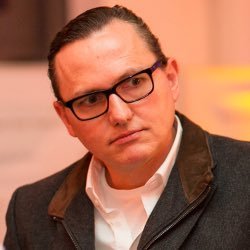Interview with
Work Package 3 Leader

Harald Sundmaeker
IoT Integration and Capabilities
What is, in your opinion, the most important legacy of IoF2020?

To me, the most important legacy is the amount of results, made available to the general public. This facilitates the understanding of the potential benefits and challenges when realising IoT based solutions. IoF2020 provides a wide range of examples that are covering different agri-food sectors as well as technology fields. On top of that, those solutions were deployed in real world operations, not just focusing on testing very specific technological features, but validating overall solutions with real-world business models that are integrated in the existing processes and agri-food environments.

By measuring the impact with different key performance indicators, farmers and many other stakehol0ders can understand of what seem to work and where are still challenges ahead. Of course, this is not painting pictures that are just white or black, but also offering communication channels to teams of over 30 sub-projects that provide access to their lessons learnt and experience gained. Interested stakeholders are able to search for solutions that could help them improving current business processes. The project website (www.iof2020.eu), and the so called IoT catalogue (www.iot-catalogue.com) are tools to start learning from others’ experience. Also video material will be available, facilitating a quick understanding of potential opportunities.

Moreover, there are several tangible results that will help system and softwar0e developers to aim at advancement of interoperability and avoid overhead efforts by reusing available open source software and data models.
Looking back on your participation to IoF2020, what were some of the challenges that your work package encountered?

Our objective was to analyze the IoF2020 Use Cases and identify key enablers for the future realization of IoT based solutions. Therefore, we aimed at understanding if elements in the Use Cases can be reused or even replicated. We wanted to know if they could become overall solutions in other settings, and with other solution providers and end-users. We aimed at elaborating a reference architecture for the design of IoT based solutions in the agri-food domain. In the meantime, we are also working on the identification of those components that are not specific to the agri-food sector but will also open interoperability, reusability, and applicability in all sectors. We collaborated with colleagues working on smart cities, in the manufacturing sector, with agricultural machinery providers... We are linking the different worlds.

The larger number of sub-projects resulted in complexity and heterogeneity. It challenged the teams to find the appropriate level of detail to analyze results and identify potential components for reuse and replication. At the same time, we had to work on strategies to keep the results accessible and viable after the end of the project. This was the driver in transferring project results to communities that have an intrinsic motivation for enhancement and take-up. The collaboration with communities of software developers and standard development organizations helped to identify different paths for the follow-up. We identified ways like a data marketplace or the smart data model initiative to initiate a project follow-up. Nevertheless, this was not an easy and straightforward process. It required patience as well as endurance to follow the intended line of actions.

I would like to show my gratitude to all colleagues, who did not stop working on a joint vision, contributing with ideas, content, and commitment!
What would be your recommendations to young farmers who are hesitating to join such projects/use such technologies?

Such projects or technologies are only tools to reach objectives and overcome challenges. It is important to actually use those tools and not to wait for others to make those tools helpful for my farm. Farmers need to formulate their problems, requirements, challenges, and underlying motivation. At the same time, they need to be members of the team, driving the innovation process. Of course, if they identify that initial results do not match their expectations, they need to dare to discuss a change or even stop an innovation experiment. This is important in an early stage, before increasing investments that do not match their business objectives.

Initiatives like the IoF2020 project can be valuable if a farmer experiences a need for progress and action. The provided funding can mitigate the risks of the innovation process. The interdisciplinary teams can study very specific questions.

However, the complexity and duration of such projects are not adequate to address urgent problems. For such projects, the chosen topics need to address more strategic challenges, which should be drilled down to very specific questions before the project starts. It is beneficial to collaborate with a competent regional team, experienced in such innovation processes. The upcoming initiative on Digital Innovation Hubs in the agri-food domain offers a promising approach. It is a great opportunity to join such teams and take advantage of specific innovation services.